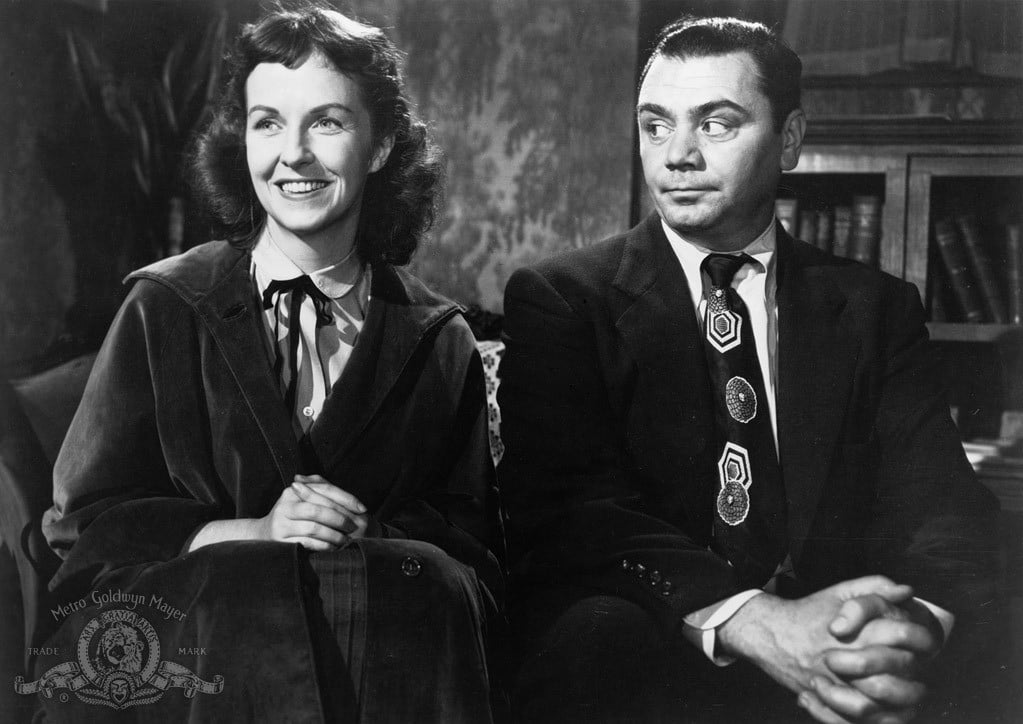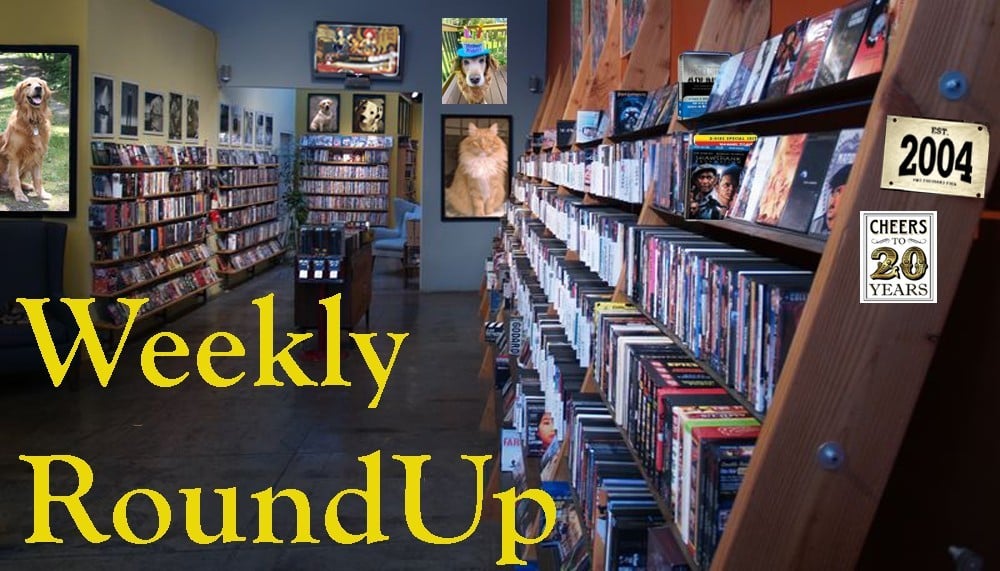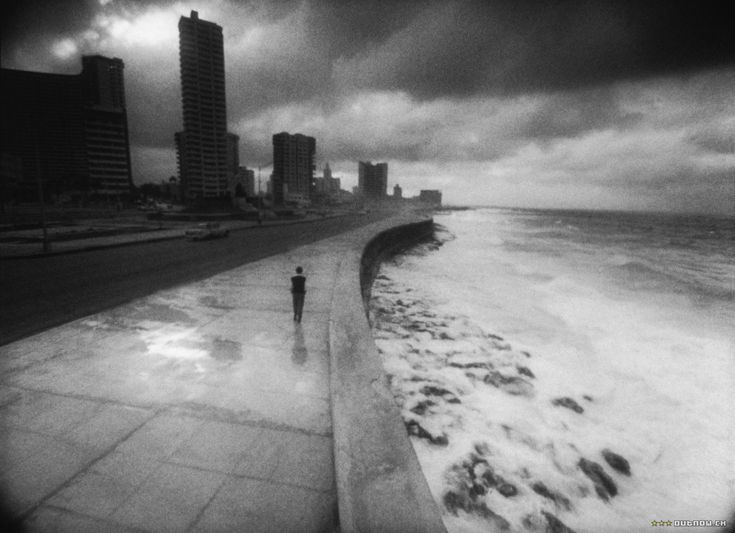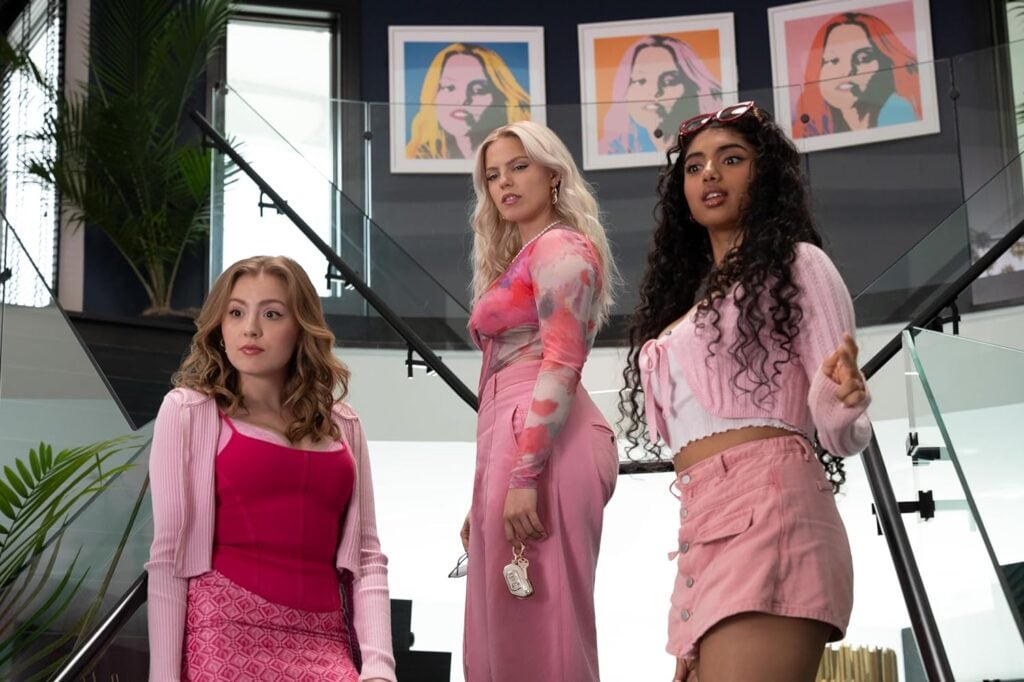One of the most successful writers of television’s first Golden Age, Paddy Chayefsky had a knack for intimate realism as well as satire that was perfect for the burgeoning medium. That quality also transferred well into Hollywood, looking to keep pace with the format in the 1950’s, and made the leap successfully, earning three Oscars over the years for his scripts like The Hospital (1971) and Network (1976); his first Oscar win came for a film he first scripted for an episode of The Philco Television Playhouse, Marty. One of the first Blu-rays Kino released as part of their Studio Classics line, they have revisited the movie for a brand new release.
The Production: 5/5
34-year-old Bronx butcher Marty Piletti (Ernest Borgnine) has resigned himself to a life of a lonely bachelor, despite attempts to reach out and find a date, even if only for a Saturday night. His luck changes one Saturday night, when – reluctantly following the advice of his mother (Esther Minciotti) – he attends the Stardust Ballroom and meets Clara (Betsy Blair), a schoolteacher at a local high school who’s just as lonelyhearted as he is. However, his newly found happiness is quickly challenged by friends and family, who want the new relationship to end for different reasons. But – despite initial doubts himself – Marty is about to discover a newfound resolve to follow his heart…
Making the leap from the small screen to big, Marty exudes genuine charm. Adapting from his own teleplay, Paddy Chayefsky keeps the story’s heart intact while jettisoning a few of the more downbeat qualities that marked the original TV version. Delbert Mann, who also made the leap from the original teleplay here, deftly combines warmth, humor and pathos in an assured, Oscar winning debut as a feature film director. Best of all, everyone working either in front of or behind the camera is at the top of their game here, capturing a Bronx neighborhood atmosphere that feels genuine throughout. A little film with a big heart, Marty still manages to capture the hearts of those who witness its simple yet fully involving story, whether for the first or the hundredth time; one final note: the movie is one of only three movies in history to take home both the Best Picture Oscar and the Palme d’Or at Cannes (The Lost Weekend and Parasite are the other two, in case you were wondering).
Picking up the lead role when Rod Steiger – who portrayed Marty in the teleplay – declined to sign a contract with producers Harold Hecht and Burt Lancaster (the latter uncredited here) to reprise the role for the big screen, Ernest Borgnine not only broke free from typecasting as a heavy, but also won a Best Actor Oscar for his heartfelt portrayal of the lonely butcher who finally finds love; while he would never again be nominated for an Oscar, Borgnine would still be a reliable character actor and found greater fame on TV with McHale’s Navy. Breaking her blacklist status here (with a little help from husband Gene Kelly), Betsy Blair earned an Oscar nomination for Best Supporting Actress for playing the plain Clara, whose own loneliness is ended as well; despite the nomination, she would make only sporadic appearances in film following this one but continued to be active on the stage. One of the three carryovers from the teleplay cast, Joe Mantell earned the film’s third acting Oscar nod for portraying Angie, Marty’s best friend; he would later make more memorable appearances as the ill-fated diner lighting a cigar in Alfred Hitchcock’s The Birds (1963) and in Chinatown (1974), where he utters the film’s famous closing line: “Forget it Jake, it’s Chinatown.” Rounding out the cast here are Esther Minciotti as Marty’s mother (reprising her role from the teleplay), Augusta Ciolli as Aunt Catherine (the third role reprisal from the teleplay), Karen Steele and Jerry Paris (the latter later a movie director himself) as married couple Virginia and Tommy and uncredited appearances by Jack Klugman as a bar patron, Minerva Urecal as butcher shop patron Mrs. Rosari and even Paddy Chayefsky as Leo, another one of Marty’s friends; look carefully for Jerry Orbach as a patron of the Stardust Ballroom (it was his uncredited film debut).
Video: 4.5/5
3D Rating: NA
This release has two aspect ratio options for the movie: the 1:37:1 version (which was how the movie had been presented on home video for many years) and the 1:85:1 version (which represents the original theatrical presentation, available on home video here for the first time); both versions are taken from brand new 4K masters created for this release. Film grain, gray scale and fine details appear to be presented faithfully with minimal instances of scratches, tears or dirt present; this release also has the original hexagonal United Artists logo restored to the beginning of the movie. This release is likely the best the movie will ever look on home video and easily bests Kino’s previous Blu-ray.
Audio: 5/5
The film’s original mono soundtrack is presented on a DTS-HD Master Audio track for this release. Dialogue, sound mix and music score – composed by Roy Webb with additional music by George Bassman – are all faithfully presented with minimal to no instances of fluttering, crackling, distortion, popping or hissing present. Again, this release is likely the best the movie will ever sound on home video and is another step up for Kino’s previous Blu-ray release.
Special Features: 3.5/5
Commentary by authors/entertainment journalists Bryan Reesman and Max Evry – Recorded for this release, Reesman and Evry go over details on the film’s production – like how Ernest Borgnine got cast in the lead to which Bronx locations seen in the film are still standing today – in a jovial and lively manner.
Theatrical Trailer (2:59) – Burt Lancaster (who’s uncredited for co-producing the movie) appears and narrates the trailer.
Bonus KLSC Trailers – The Lost Weekend, The Apartment, In the Heat of the Night, Separate Tables, Fitzwilly & The Pink Jungle
Overall: 4.5/5
A film that captured the hearts of audiences and critics in America and around the world, Marty still maintains its light yet potent charm in its translation from TV to the big screen. Kino has done the movie full justice here with a solid HD transfer that presents the movie in two different aspect ratios (including the original theatrical aspect ratio for the first time) as well as an informative commentary as a special feature. Very highly recommended and absolutely worth upgrading from the previous Kino Blu-ray.
Mychal has been on the Home Theater Forum’s reviewing staff since 2018, with reviews numbering close to 300. During this time, he has also been working as an assistant manager at The Cotton Patch – his family’s fabric and quilting supplies business in Keizer, Oregon. When not working at reviewing movies or working at the family business, he enjoys exploring the Oregon Coast, playing video games and watching baseball in addition to his expansive collection of movies on DVD, Blu-ray and UHD, totalling over 3,000 movies.
Post Disclaimer
Some of our content may contain marketing links, which means we will receive a commission for purchases made via those links. In our editorial content, these affiliate links appear automatically, and our editorial teams are not influenced by our affiliate partnerships. We work with several providers (currently Skimlinks and Amazon) to manage our affiliate relationships. You can find out more about their services by visiting their sites.






Similar threads
- Matt Hough
- Blu-ray and UHD
2